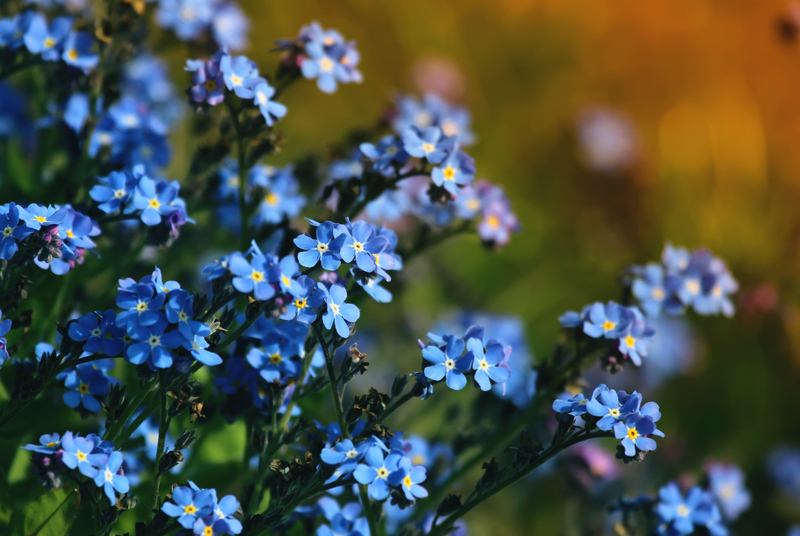Achieve Landscaping Excellence with Creative Hedge Shapes
Posted on 10/06/2025
Achieve Landscaping Excellence with Creative Hedge Shapes
In the ever-evolving world of landscape design, a trend that stands out as both timeless and innovative is the art of creative hedge shaping. Whether you are looking to enhance curb appeal, define outdoor living spaces, or introduce a whimsical touch, uniquely designed hedges are an excellent choice. In this comprehensive guide, we explore how you can achieve landscaping excellence by leveraging the power of imaginative hedge shapes. Discover the possibilities that will transform any garden or estate into a stunning masterpiece.
Why Opt for Creative Hedge Shapes in Landscaping?
Hedges are not just natural barriers or privacy walls--they are versatile living sculptures. Incorporating creative shapes into your garden landscape adds layers of interest, texture, and personality. Here's why you should consider adding them to your landscape:
- Visual Interest: Unique hedge shapes break the monotony of flat lines and standard green walls.
- Functionality: Skillfully sculpted hedges can act as windbreakers, privacy screens, or guide pathways.
- Artistic Expression: Hedge topiary and geometric designs provide a canvas to express your style and creativity.
- Increased Property Value: Eye-catching landscapes often enhance property values and appeal to potential buyers.

The Fundamentals of Hedge Sculpture in Landscaping
To achieve hedge landscaping excellence, it's crucial to understand the foundational techniques behind hedge shaping and maintenance. This section covers hedge selection, basic trimming methods, and the importance of planning.
Choosing the Right Plant Varieties
Not every shrub makes for a good hedge. The most successful creative shapes begin with plants that respond well to pruning. Consider these popular choices:
- Boxwood (Buxus sempervirens): Dense growth and slow habit make it ideal for intricate shapes.
- Yew (Taxus baccata): Durable, shade-tolerant, and great for both classic and abstract forms.
- Privet (Ligustrum): Fast-growing and adaptable for larger, dramatic designs.
- Holly (Ilex): Offers glossy leaves and works well in structured or whimsical forms.
- Lonicera nitida: Perfect for smaller, detailed designs due to its fine foliage.
Understanding Pruning Techniques
Shaping hedges requires patience and knowledge of pruning practices. Achieving those sharp lines, smooth curves, or elaborate topiary animals is easier when following these tips:
- Regular Trimming: Trim hedges two to three times during the growing season for the best results.
- Use the Right Tools: Hand shears, electric trimmers, and specialty clippers allow for precision and clean cuts.
- Start Simple: Begin with basic geometric shapes before tackling more elaborate designs--practice builds confidence and skill.
- Step Back Frequently: Regularly assess your work from different angles to ensure symmetry and accuracy.
Planning Creative Hedge Shapes
Designing with hedges requires foresight. Plan the whole look and function within your landscape by considering:
- Scale and Proportion: Match hedge height and width to your overall outdoor space, keeping traffic flow in mind.
- Sunlight and Soil: Choose plant varieties best suited to your environment for healthy, long-lasting hedges.
- Purpose of the Hedge: Are you creating privacy, defining zones, or simply making a statement? Purpose affects shape and density.
- Long-Term Maintenance: Pick shapes and species that match how much time you can commit to keeping them pristine.
Popular and Unique Hedge Shape Ideas
The diversity of creative hedge forms is nearly endless. Here we highlight some of the most admired styles and some extraordinary shapes to inspire your next landscaping project.
Classic Geometric Designs
Traditional hedges often showcase geometric forms such as:
- Box shapes: Crisp and formal, suitable for sophisticated gardens.
- Spherical balls: Add playful texture along walkways or as entryway accents.
- Pyramids and cones: Lend visual height and variety, particularly in parterre gardens.
- Waves or undulating patterns: Soften linear designs and complement organic landscapes.
Animal Topiary and Whimsical Forms
Show off your taste for the extraordinary with:
- Animal-shaped hedges: From playful rabbits to proud peacocks, topiary animals leave a lasting impression.
- Abstract sculptures: Create fantasy-inspired shapes or modern art sculptures with flexible hedge varieties.
- Seasonal themes: Hedges sculpted into holiday motifs or garden objects add charm year-round.
Functional Hedge Shapes for Outdoor Living
Creative hedges don't have to sacrifice function for form. Integrate productive and stylish elements including:
- Arched or domed tunnels: Enhance garden paths or entrances with a sense of wonder.
- Maze patterns: Build privacy and intrigue with living labyrinths.
- "Windows" or frames created in the hedge: Offer curated views of focal points like water features or statues.
How to Create and Maintain Creative Hedge Shapes
The road to landscaping excellence with hedge shapes is paved with dedicated care and consistent attention. Here, we guide you through the practical steps for designing, growing, and sustaining these living works of art.
Designing Your Hedge Masterpiece
- Visualize and Plan: Draft your design on paper or use garden planning software.
- Mark Guidelines: Use stakes, strings, or cardboard templates to outline shapes before trimming.
- Planting with Spacing: Follow recommended planting distances for your chosen species to allow for mature growth and shaping.
- Initial Trimming: Once plants are established, begin formative pruning to direct growth into your desired shape.
Trimming Techniques for Creative Hedge Forms
- Frequent Maintenance: For detailed shapes, especially topiary, frequent light trimming helps maintain precision.
- Prune Gradually: Don't over-prune at once--allow the shape to develop progressively for plant health.
- Thinning and Cleaning: Remove dead or diseased branches, especially from the inner portions, to improve airflow and sunlight penetration.
- Feeding and Watering: Fertilize in spring and keep soil moist, especially while establishing new shapes.
Seasonal Tips for Optimal Hedge Health
- Spring: Major shaping and feeding take place as new growth starts.
- Summer: Light trims keep lines crisp, and regular watering is essential.
- Fall: Prepare for winter by giving hedges a final shape-up, and clean up debris to prevent disease.
- Winter: Protect some species with burlap wraps in colder climates, and avoid heavy pruning during dormancy.
Expert Tips for Achieving Landscaping Excellence
To truly stand out, consider adopting professional techniques and creative approaches:
- Layered Hedges: Combine hedges of different heights, colors, or textures for depth and complexity.
- Incorporate Lighting: Strategically placed outdoor lights can highlight shapes and create dramatic nighttime interest.
- Mix with Other Plant Forms: Pair creative hedges with flowering borders, specimen trees, or ornamental grasses for a balanced landscape.
- Seek Inspiration: Tour public gardens, browse design magazines, or consult with expert landscape architects for fresh ideas.
- Document Your Progress: Take before-and-after photos to measure improvement and inspire future projects.
Common Mistakes to Avoid with Creative Hedge Landscaping
While the rewards of creative hedging are many, knowing what to avoid is equally important for lasting success. Here are some frequent pitfalls:
- Overcrowding: Planting hedges too closely can limit growth and complicate shaping.
- Neglecting Regular Trimming: Skipping maintenance leads to overgrown or "leggy" hedges that lose their defined shapes.
- Improper Tool Use: Dull or inappropriate tools result in uneven cuts and damage plants.
- Not Considering Mature Size: Failing to plan for full-grown dimensions can require drastic correction later.

FAQs: Landscaping Excellence Through Creative Hedge Shapes
Can creative hedge shapes work in small gardens?
Absolutely! Many intricate hedge designs are perfect for smaller spaces, such as box balls flanking doorways or miniature animal topiaries in decorative pots.
How often should I trim my creative hedges to maintain their form?
For most artistic hedge shapes, light trimming every 4-6 weeks during the growing season is recommended, with a heavier trim in early spring.
Which hedge species are best for elaborate topiary?
Boxwood, yew, privet, and Lonicera nitida remain the gold standards thanks to their small leaves and responsive growth habits.
Is professional help necessary for complex hedge shapes?
While many home gardeners achieve outstanding results, hiring a professional for intricate or large-scale projects ensures precision and a polished look.
Conclusion: Elevate Your Landscape with Imagination and Skill
Achieving landscaping excellence with creative hedge shapes is both a science and an art. Whether you favor timeless geometric patterns or whimsical animal forms, the right planning, planting, and pruning methods can transform your yard into a living gallery. Not only will your property shine with unique beauty, but you'll also enjoy the satisfaction of curating a garden of lasting value and visual intrigue.
By integrating uniquely shaped hedges into your landscape design, you join a long tradition that merges creativity, craftsmanship, and botany. Start small, experiment boldly, and maintain your creations with dedicated care. The rewards--a more attractive property, a healthier environment, and years of enjoyment--make the endeavor truly worthwhile.
Ready to achieve landscaping excellence in your own backyard? Get inspired, grab your trimming shears, and watch as your garden transforms into an extraordinary outdoor sanctuary!

